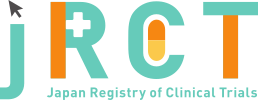臨床研究等提出・公開システム
|
April. 04, 2016 |
|
|
April. 26, 2021 |
|
|
jRCT1080223160 |
The exploratory study of the efficacy and the safety of Kamishoyosan on menopausal symptoms |
|
Kamisyoyosan's effects on some menopausal symptoms study:KOSMOS Study |
|
Mar. 31, 2018 |
|
53 |
|
In the NR group, the score for waking up at night(TJ-24:4.6+-2.6,Placebo:6.4+-2.2) was significantly different between participants in the TJ-24 and placebo arms, but there were no other significant differences such as age(TJ-24:51.5+-2.6,Placebo:51.2+-3.4), body mass index(TJ-24:21.0+-1.9,Placebo:22.9+-4.2), or last menstrual period(TJ-24:750.6+-889.7,Placebo:708.0+-946.9). |
|
Of the 55 individuals enrolled in the study, there were administered a placebo for a 4-week run-in period. Two withdrew before randomization (withdrawal of consent and failure to attend the study visit) and 53 participants were thus randomly allocated. None of the allocated participants missed data required for efficacy analysis, and the FAS accordingly consisted of these 53 individuals, as did the safety analysis set. In the assessment at the end of the 4-week run-in period, 40 participants (75.5%) were classified in the placebo nonresponder(NR) group, and the placebo responder(R) group included the remaining 13 participants (24.5%). Participants in both groups were randomized to receive either TJ-24 or placebo. |
|
An analysis of the FAS found that 17 adverse events occurred in 11 participants and six adverse drug reactions occurred in four participants in the TJ-24 arm, including six cases of the common cold or influenza, and one case each of vomiting, diarrhea, cutaneous pruritus, and herpes labialis. In the placebo arm, 11 adverse events occurred in seven patients, and two adverse drug reactions occurred in two patients, including four cases of the common cold, two cases of constipation, and one case each of diarrhea and cutaneous pruritus. No event was serious. There was no significant difference in the incidences of either adverse drug reactions or adverse events between the TJ-24 and placebo arms in the NR and R groups. There were no abnormal results in the blood testing, excluding one case of slight hyperkalemia in a patient who received TJ-24. |
|
The effect of TJ-24 on participants in the NR group, who were considered less susceptible to the placebo effect, was investigated. The changes of the excitability and irritability score during the treatment period, the primary outcome, decreased significantly by -3.1+-1.7 in the TJ-24 arm versus baseline. However, the score decreased by -2.7+-2.2 in the placebo arm, with no significant difference between the two arms (p= 0.519). |
|
There was also no significant difference between the TJ-24 and placebo arms in the rate of other common menopausal symptoms including hot flashes, sweating, and sleep disturbance-related complaints, and this was also the case for other symptoms. To investigate whether baseline characteristics altered the effect of TJ-24, participants were classified by menopausal status, BMI, the duration of climacteric disorder, and prior hysterectomy/oophorectomy. Of these, menopausal status altered the effect on several symptoms. In premenopausal women, the changes of the excitability and irritability score were significantly greater in the TJ-24 arm than in the placebo arm (-3.6+-1.5 vs. -2.2+-2.1). In postmenopausal women, there was no significant difference in the excitability and irritability score between the groups, whereas the changes in the scores for hot flashes and sweating were significantly larger in the placebo arm than in the TJ-24 arm. There were no significant differences for any other baseline characteristics. |
|
The change in the excitability and irritability score of the NR group was -3.1+-1.7 in the TJ-24 group, which was a significant decrease, but no significant difference was observed between the two groups.In a subgroup analysis, changes in the excitability and irritability score in premenopausal women were significantly greater in the TJ-24 group. The incidence of either adverse drug reactions or adverse events between the two arms and no event was serious. |
|
Feb. 26, 2021 |
|
https://downloads.hindawi.com/journals/ecam/2021/8856149.pdf |
No |
|
| version: date: |
Tsumura & Co. |
||
2-17-11, Akasaka, Minato-ku, Tokyo |
||
+81-3-6361-7188 |
||
kido_toshitaka@meail.tsumura.co.jp |
Tsumura & Co. |
||
https://www.tsumura.co.jp/english/info/profile/ |
||
completed |
April. 27, 2016 |
||
| 60 | ||
Interventional |
||
A randomized double blind, placebo-controlled trial |
||
other |
||
4 |
||
1) Menopausal disorder patients |
||
1) Patients with an extremely weak gastrointestinal tract |
||
| 40age old over | ||
| 60age old under | ||
Female |
||
Menopausal disorders |
||
investigational material(s) |
||
safety |
||
safety |
||
| Tsumura & Co. | |
| - |
| Tsumura & Co. | |
| Contract research expenses |
| Tokyo Dental College Ichikawa General Hospital Institutional Review Board | |
| 5-11-13, Sugano, Ichikawa, chiba, Japan | |
+81-47-322-0151 |
|
| Approval | |
Jan. 15, 2016 |
| JapicCTI-163215 | |
| Japan |
